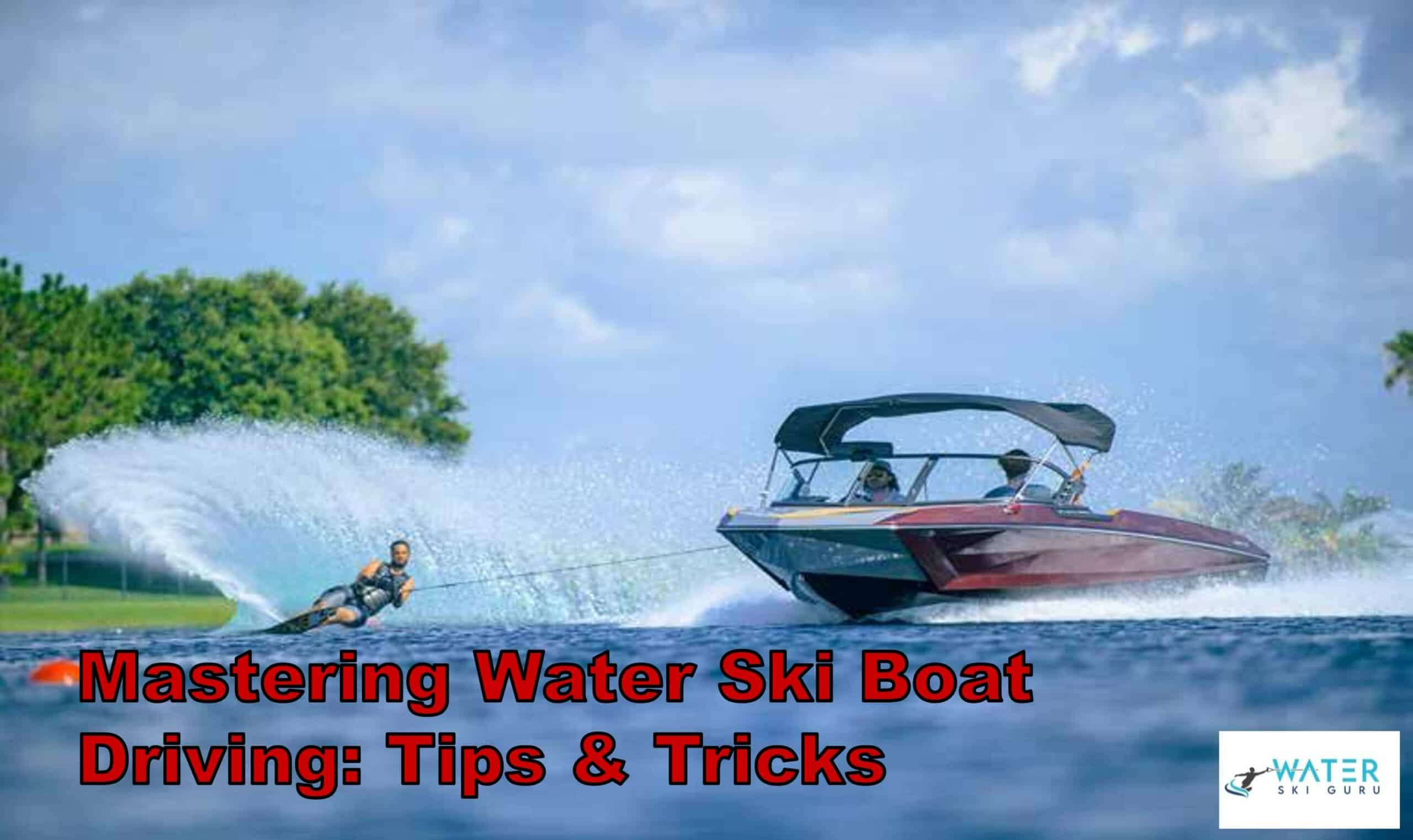As an experienced water ski boat driver, I know firsthand the thrill of watching skiers glide effortlessly across the water. But I also understand the importance of mastering the waves to ensure a safe and enjoyable experience for everyone on board.
Whether you’re a beginner or an advanced driver, there are a variety of tips to consider when navigating the waters with skiers in tow.
From the impact of lake depth and water temperature on wake size and skier position, to maneuvering techniques, safety precautions, and best practices for storing gear and maintaining the boat, driving a water ski boat requires a unique set of skills.
By mastering these tips, you can become a more confident and skilled driver, and ensure a safe and enjoyable experience for yourself and your skiers.
In this article, we’ll explore some of the basics of driving a water ski boat, as well as advanced maneuvers and boat maintenance tips to help you take your skills to the next level.
So grab your life jacket and let’s dive in!
Driving Basics
I always keep in mind the driving basics when I’m behind the wheel of a water ski boat. Speed control is crucial for the safety of the skier and the boat. That’s why I use the slack in the steering wheel for fractional changes in direction, preventing any sudden movements.
I also avoid using too much throttle in reverse to prevent sinking and prop damage, maintaining the perfect balance between speed and control. Ensuring the skier’s safety is my top priority. I use bright helmets or vests for visibility and attach the rope correctly, avoiding knots that can damage the rope.
I also keep an eye on the rope as it feeds out to prevent tangling and upholstery damage. By mastering these driving basics, I can provide a safe and enjoyable experience for everyone involved.
Boat Maintenance
Regular maintenance is essential for keeping the boat in good condition. During winter storage, it’s important to properly prepare the engine for saltwater use and avoid exposure to swell and surf.
Storing gear under seats helps keep the boat tidy, but it’s important to leave sealed compartments open if gear stored inside is wet to prevent mold and mildew. Additionally, it’s crucial to avoid taking non-floating ballast, as water ballast or people are safer alternatives to metal or cement weights. When driving, be sure to move weight to the side with more white-wash for better hull in water.
Proper engine care is an important part of boat maintenance. It’s essential to prep the engine for saltwater use and avoid exposure to swell and surf. When storing the boat for winter, it’s important to properly winterize the engine by flushing it with fresh water and adding antifreeze. Additionally, it’s important to keep an eye on the engine’s oil levels and change the oil regularly to prevent damage.
By taking these steps to properly maintain the boat, you’ll ensure that it lasts for years to come.
Advanced Maneuvers
To smoothly execute advanced maneuvers while driving a water ski boat, it’s crucial to adapt to the skier’s preferences and maintain a steady speed in choppy waters. Here are some tips to help you master these maneuvers:
- Boat Line Judging: Use the boat wake in the mirror to judge the straightness of the boat line, and pick a point on the horizon to drive directly towards. You can also put a piece of tape on the bow to target the point on the horizon for better accuracy.
- Wind Conditions: Avoid locations with strong winds to prevent dangerous swells, and pick head or tailwind over side wind for better line holding and skier experience. Headwind keeps the rope tight, while tailwind gives the skier slack rope.
- Skier Experience: Always give the skier more space than you think necessary, as they have limited mobility in water. Kill the engine quickly if you’re getting too close to the skier or an object in the water.
- Practice: Constantly improve your skills and adapt your driving style to the skier’s preferences. Practice driving without cruise control to improve your speed control skills, and use a life vest in the middle of the lake to practice your driving skills in a safe environment.
By following these tips, you’ll be able to smoothly execute advanced maneuvers while driving a water ski boat, impressing your skier and improving your own skills. Remember to always prioritize safety and be aware of your surroundings.
Frequently Asked Questions
What safety gear should a driver have on hand when operating a water ski boat?
As a driver of a water ski boat, I always make sure to have essential safety equipment on board, such as life jackets, a first aid kit, and a fire extinguisher. I also wear proper attire, including a bright vest for visibility.
How can a driver adjust the boat’s steering to accommodate for wind or choppy water conditions?
When facing wind or choppy water, adjusting the boat’s steering is key. I use a combination of driver’s techniques and strategies, effective communication with skiers, and visualization of the ideal line to navigate these conditions with precision.
What are some common mistakes that new water ski boat drivers make, and how can they be avoided?
As a seasoned water ski boat driver, I know that common mistakes for new drivers include improper rope attachment, not giving enough space to skiers, and forgetting to kill the engine when necessary. To avoid these mistakes, always double check the rope attachment, give skiers plenty of space, and be aware of your surroundings at all times.
How can a driver communicate effectively with skiers in the water, particularly when turning or returning to a downed skier?
Effective communication with skiers is crucial for safe turning techniques. Clear hand signals and verbal cues should be established before starting. Use the boat’s wake to judge turns and always approach on the driver’s side.
Are there any legal requirements or regulations that drivers should be aware of when operating a water ski boat?
As an experienced water ski boat driver, it’s important to know legal requirements and safety gear. In 2019, 76% of boating deaths involved drowning and wearing life jackets can prevent this. Check local laws for specific regulations.
Conclusion
Well, that’s it for now! I hope you’ve found these tips helpful in improving your skills as a water ski boat driver.
Remember to always prioritize safety and follow proper maintenance procedures to ensure a smooth and enjoyable ride.
As you hit the waves, feel the wind in your hair and the sun on your skin. Imagine the thrill of carving through the water with your skier in tow, the rush of adrenaline as you navigate the twists and turns of the lake.
With practice and dedication, you can become a master of the waves, confidently guiding your boat and creating unforgettable memories on the water.
So go forth and conquer the waves, and enjoy the ride!

